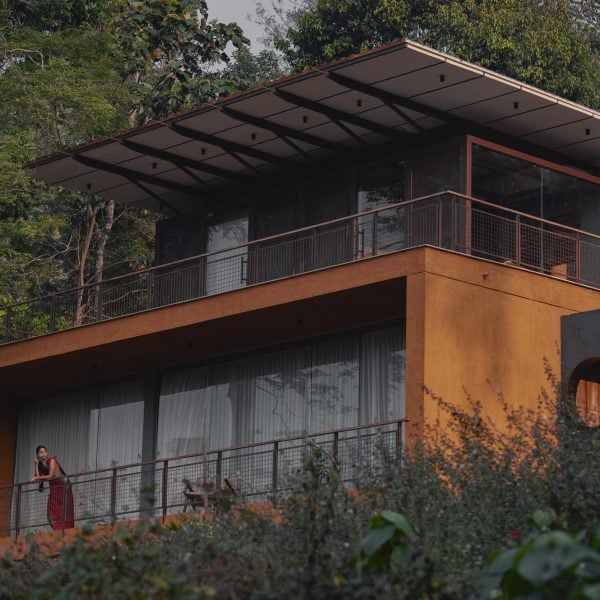[ad_1]
Indian practice Studio Terratects has completed Urul, a house on a forested site in Kerala, India, which features a mud-plastered interior.
Designed for a client engaged in environmentalism, the home in Wayanad has a natural material palette intended to evoke nature as much as possible.
Studio Terratects has also celebrated local craftsmanship and “artisanal techniques” throughout to help connect Urul to its context.
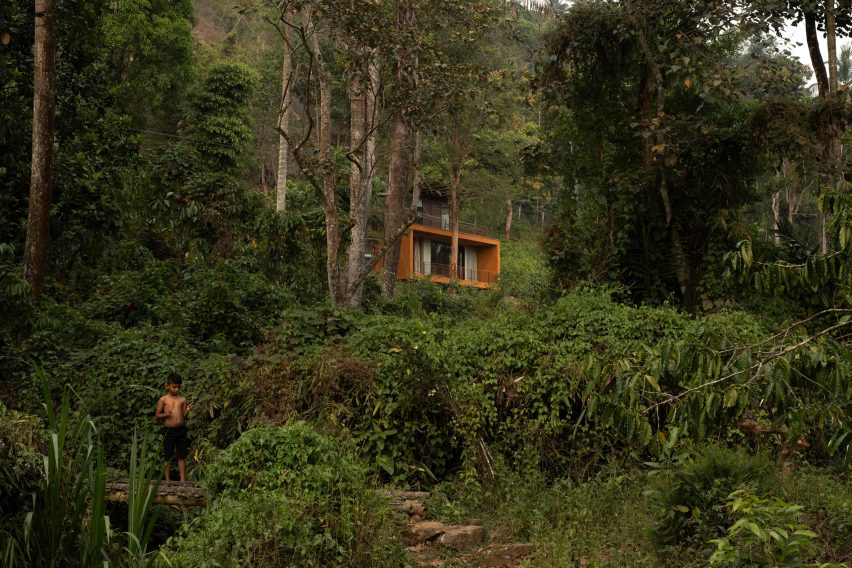
“The core concept behind the design was to create a residence where every corner and element narrates a unique story of craftsmanship and nature’s interplay,” principal architect Roshith Shibu told Dezeen.
“The design integrates artisanal techniques and natural materials, resulting in a home that feels both thoughtfully crafted and organically connected to its environment.”
Urul has a clean-cut geometric form. The lower level of its front portion is contained within a cuboidal, earth-toned block, left open on one side to make space for a terrace.
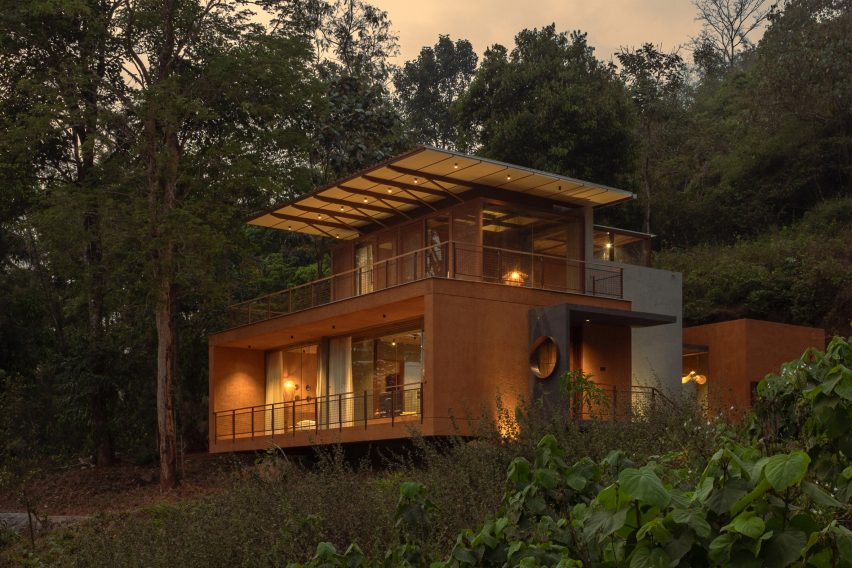
Its upper level has a smaller footprint, enclosed by black and grey walls with large windows. It is topped by a flat roof with deep eaves to shelter a balcony.
Additional volumes intersect to form the remainder of the home, including a pale grey form and an earth-toned block that are connected by a glass link.
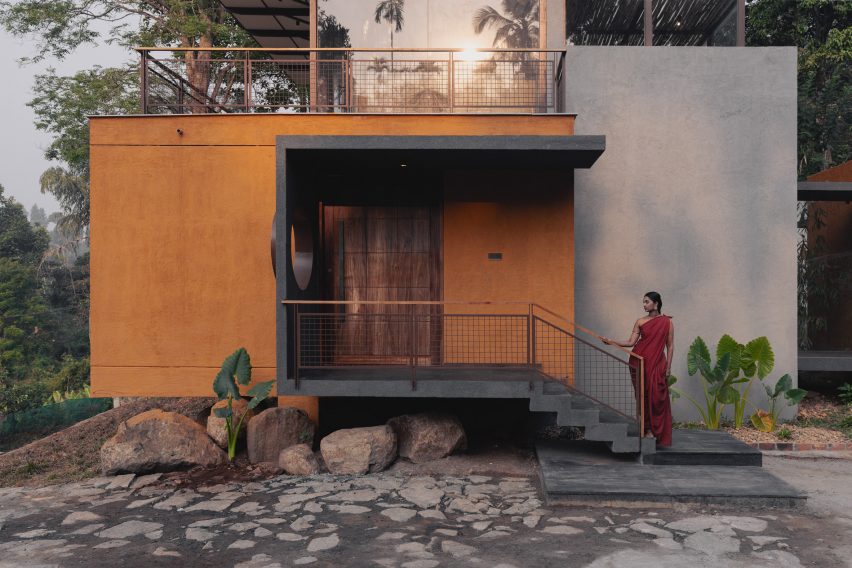
A black C-shaped volume extends from one side of the home’s raised ground floor, perforated with a circular opening that forms the front porch.
Accessed by a small flight of steps with a wooden handrail, this sheltered porch opens into a bright living area, bordered on one side by a fully glazed wall with sheer floor-to-ceiling curtains.
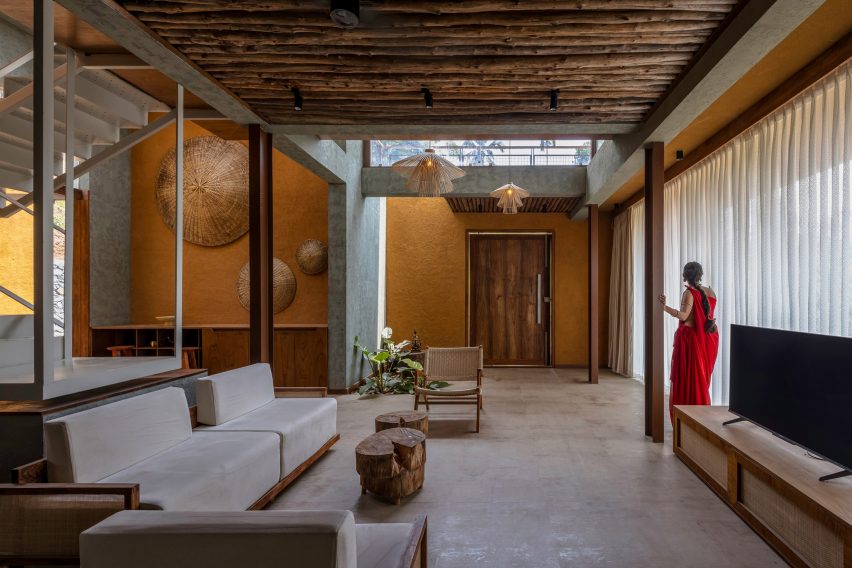
The living space is further brightened by white sofas and a skylight near the home’s entrance, while wooden furnishings give the space a natural feel.
Wooden battens line the ceiling and add texture to the room, in tandem with exposed structural elements made of concrete and steel.
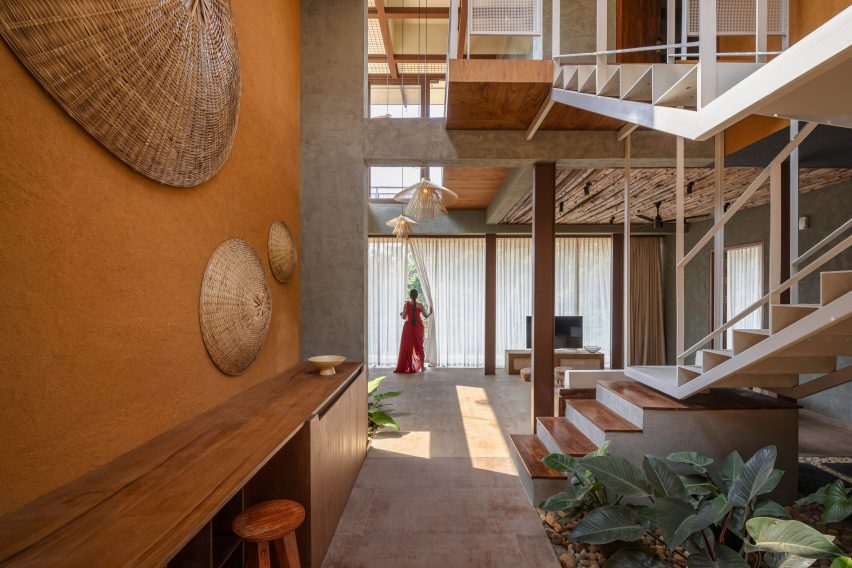
In addition to the other materials, mud plaster made with locally sourced earth was used across the interior walls.
“In designing this residence, the material palette was chosen to reflect the client’s environmentalism and desire for a nature-inspired, earthy home,” said Shibu.
“Mud plastering was selected for its thermal insulation properties and natural aesthetic, with the added significance of bearing the fingerprints of the local tribal community, telling a story of traditional craftsmanship.”
A walkway extends from one side of the living space, where a wooden workstation runs along a wall lined with woven artwork. Behind this is a small courtyard.
“The arrangement of the spaces, including the outdoor areas, was guided by a commitment to creating a harmonious flow between the indoors and the natural surroundings,” said Shibu.
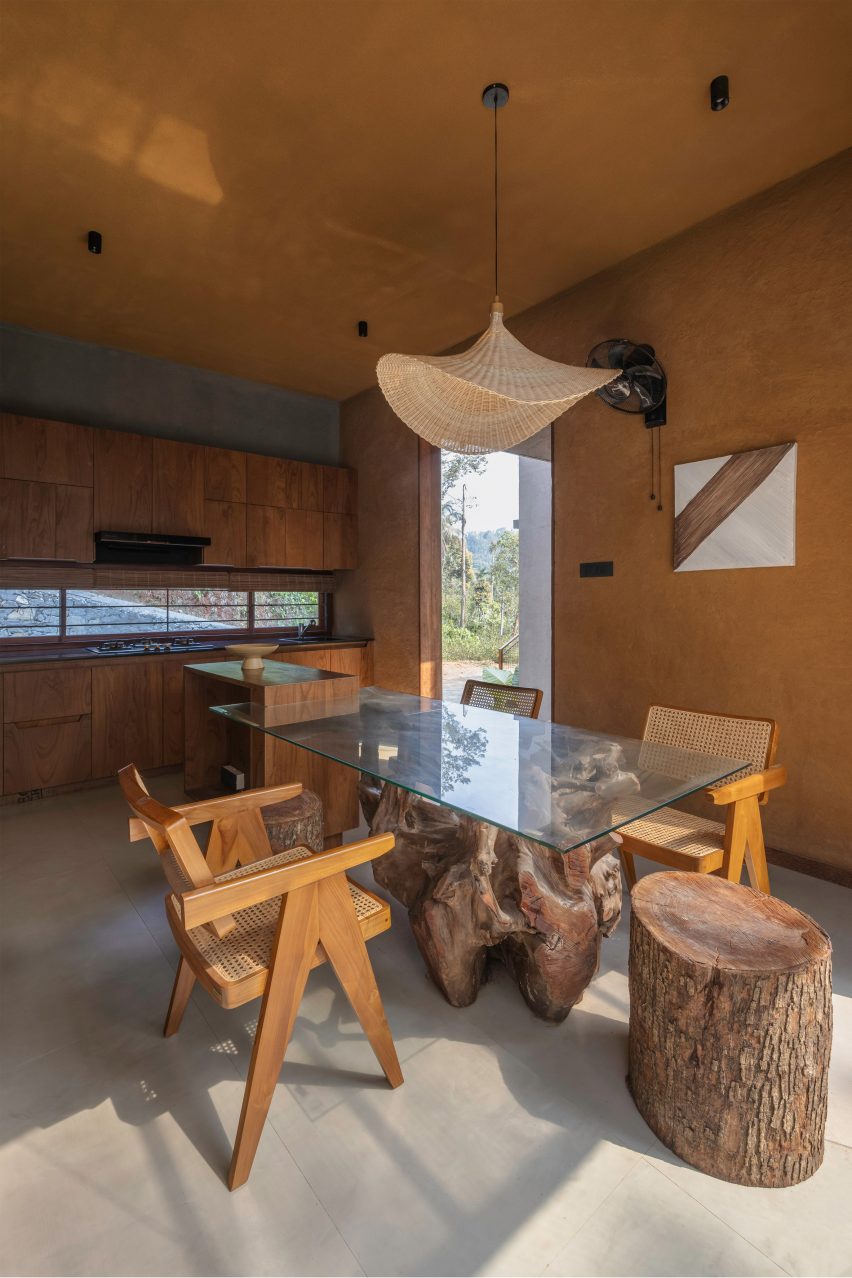
“Key considerations included maximising natural light, ensuring optimal ventilation, and fostering a seamless transition between the home’s interior and its external environment,” added Shibu.
“Functional zones are arranged to promote both privacy and social interaction, ensuring that each space serves its purpose while contributing to the overall harmony and balance of the residence,” he continued.
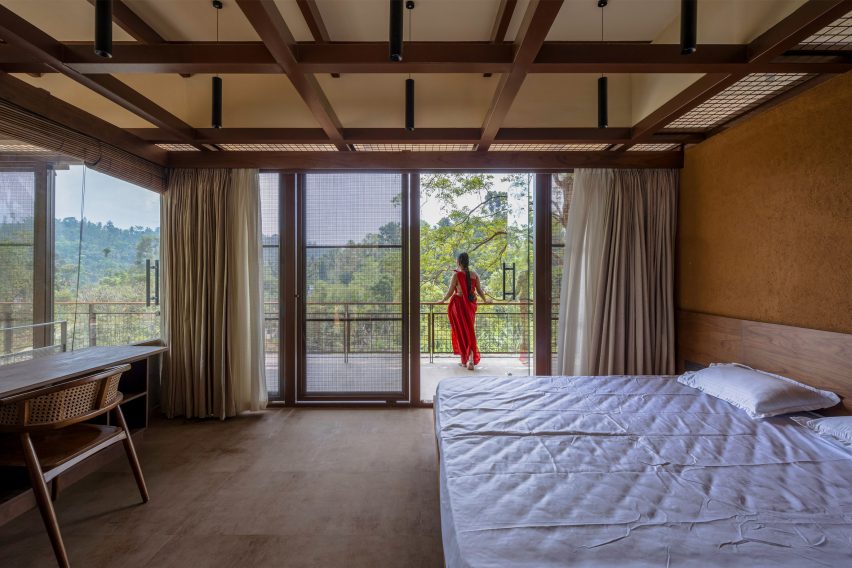
Other spaces on the ground floor include a bedroom illuminated by floor-to-ceiling glazing, a kitchen and dining room that borders a small courtyard and a bathroom. Beside the walkway is a winding staircase surrounded by walls with geometric cutouts and irregular voids.
The upper level of Urul features rooms designed to blend with the outdoors, including a generously sized terrace and a second bedroom. The walkway to the terrace borders an interior void decorated with hanging lights, offering views of the home’s ground floor.
Other recently completed Indian homes include a curving home with walls lined with discarded toys and compressed earth blocks and a rammed-earth home informed by vernacular building techniques.
The photography is by Prasanth Mohan.
[ad_2]
Source link

